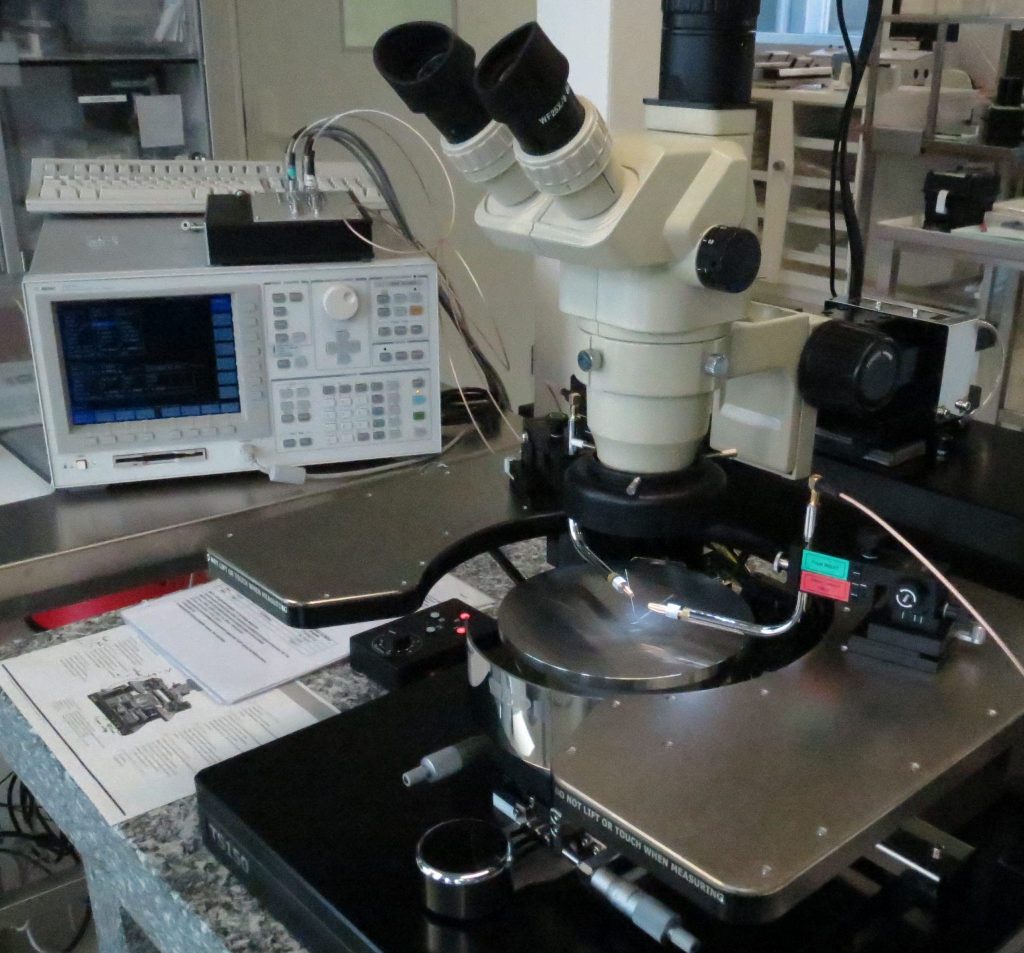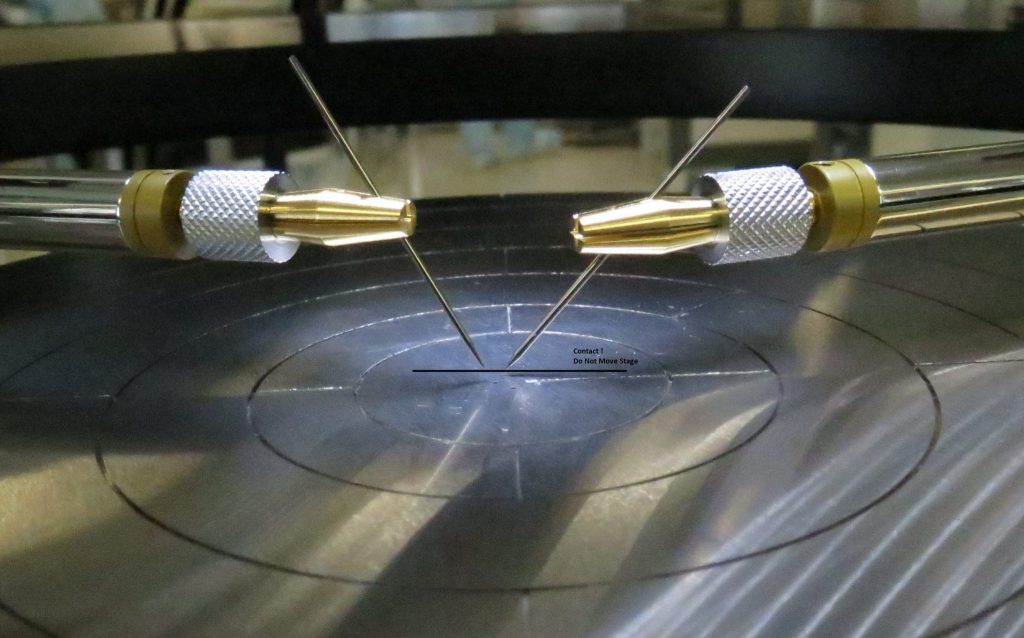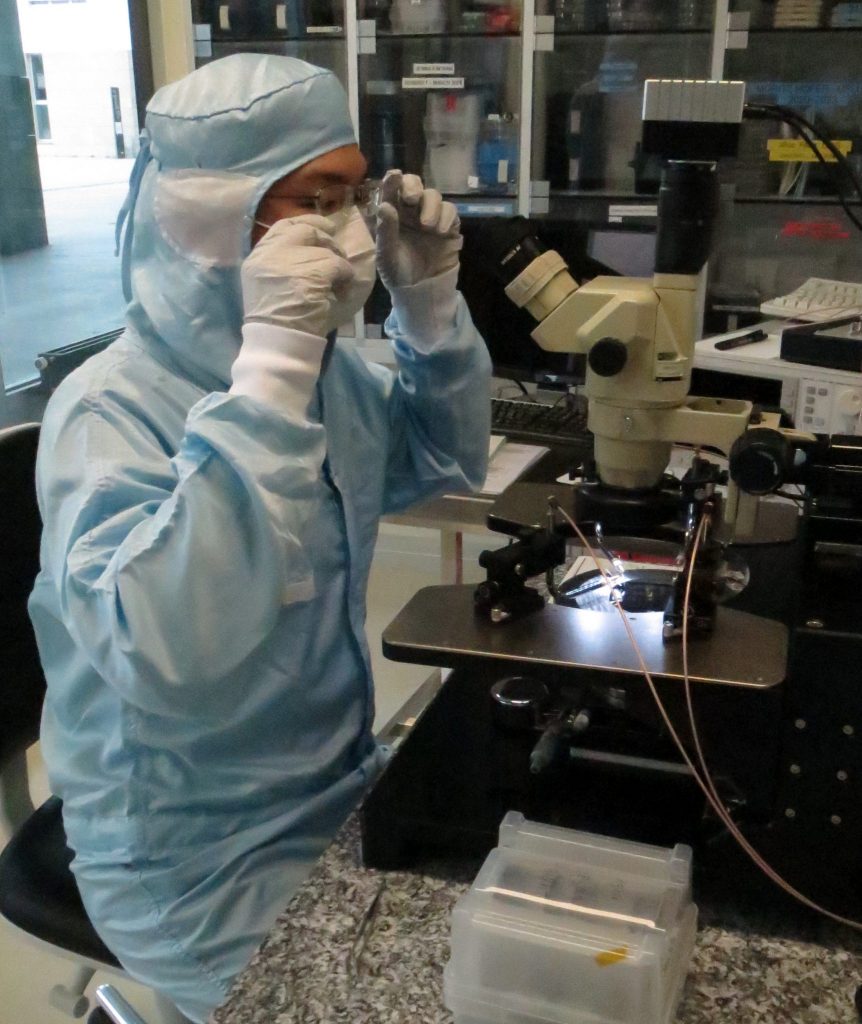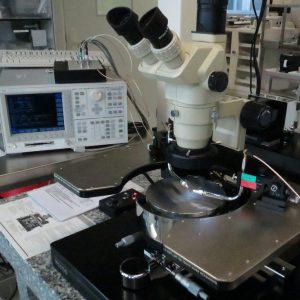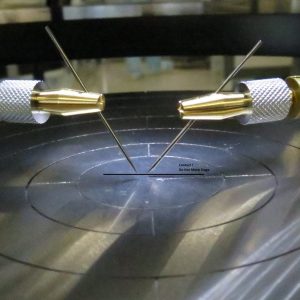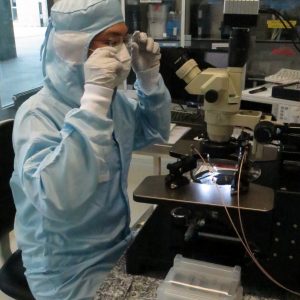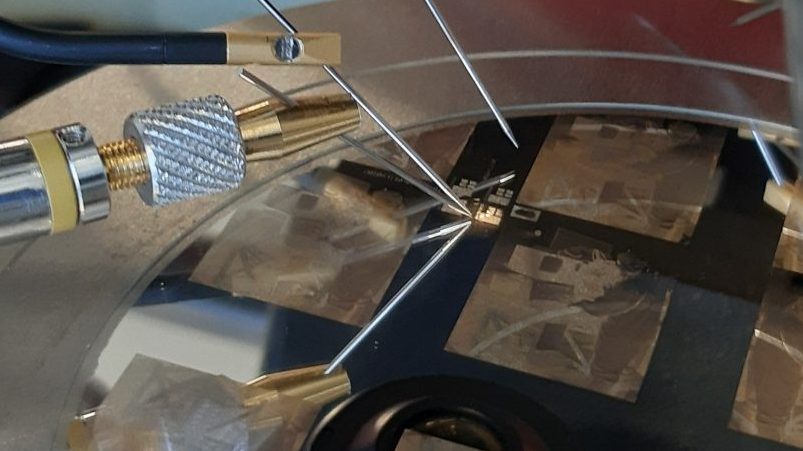
To be read first:
- WARNING!!! Shock Hazard!!! The intermediate BNC connectors, as well as the probe arms are driven to the test voltage (guard shield method) during measurement. For this reason the maximum DC voltage is limited to +/- 40V (security interlock closed by default).
- Probe needles have very sharp tips. Made from tungsten carbide material, they can be easily damaged by crash or contaminated with residues. Do not use the probes for mechanical testing or machining.
- In case of damaged or contaminated probe tip, contact the CMi staff. Do not try to clean or to change a tip without discussing with the staff.
- Please immediately inform the CMi staff in case of problems with the equipment.
RESERVATION RULES AND BOOKING FEES POLICY:
- No booking restrictions.
- 24/7 booking/use is possible with CMi+1 extended access.
- Reservation names must correspond to operators.
Contents:
I. Introduction
The MPI TS150 probe station is designed for electrical testing on wafers or chips, with a maximum of 4 independent terminals + additionnal chuck grounding. The chuck is compatible with wafer sizes up to 6 inch, chip or part of wafers. A binocular optics with digital camera is used to center the probe tips on the contact pads. Three axis movement of the probe tips with the manual micro-manipulators allow soft and precise mechanical contact on the pads.
This probe station is coupled to:
- An AGILENT Semiconductor Parameter Analyser 4155C to perform DC characterization of various microelectronic devices under test (DUT), such as resistance, diodes, transistors. .
- A Zürich Instruments multi-frequency impedance analyzer (MFIA) for AC characterization of the DUT. .
II. Equipment description

The equipment consists in:
MPI TS150 Probe Station
- Fine-glide chuck stage on highly stable granite base with 150mm x 150mm and 10mm x 10mm coarse and fine X-Y travel range.
- Binocular optics with occulars or microscope view on monitor. songle objective with zoom option.
- Selectable 4 quadrants LED illumination.
- Probes mounted on true X,Y,Z micro-positioners (MPI PM100) with interchangeable tungsten (W) contact tips (two different diameter available).
- Additional electrical connection to the chuck for conductive substrates.
DC measurements:
- Agilent 4155C Semiconductor Parameter Analyzer with 4x Medium-power SMU, 2xVSU and 2xVMU.
- Measurement capabilities: +/- 40 Volts and +/- 100 mA measurement unit (SMU) with 10 femtoamp and 0.2 microvolt measurement resolution.
- A switching box allows rapid switching of electrical connections from the SMUs to micro-probes BNC cables.
- 6 configuration options are available for standard applications such as FET, bipolar transistors, diodes, 2-points and 4-points general measurements.
- Includes Desktop EasyEXPERT software for PC-based GUI instrument control.
AC measurements:
- Zürich Instruments MFIA
- Measurement capabilities: AC signal frequency: DC to 5 MHz, AC signal voltage: 0 to 2.1 VRMS, DC bias: +/- 10 Volts (2 probes) and +/- 3 Volts (4 probes), Impedance range: 1 mOhm to 1 TOhm.
- A test fixture (MFITF) can be mounted on the MFIA for rapid testing of wire-bonded surface-mounted devices.
- Includes LabOne software for PC-based GUI instrument control.
III. User manuals
IV. Links
V. Pictures gallery
